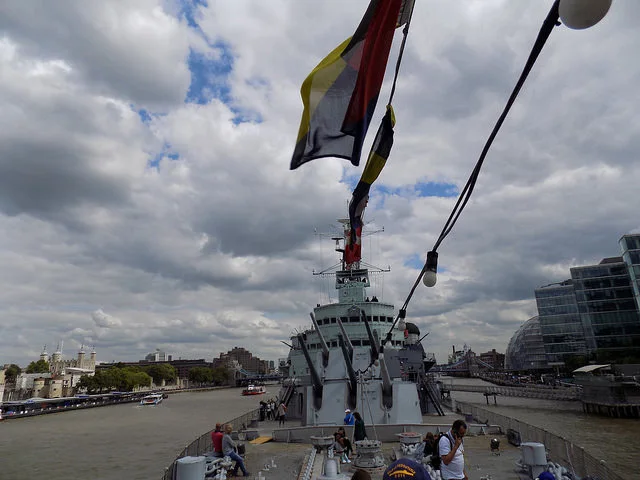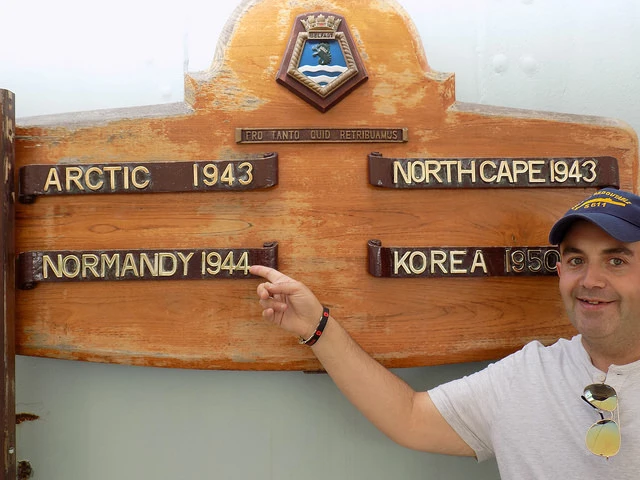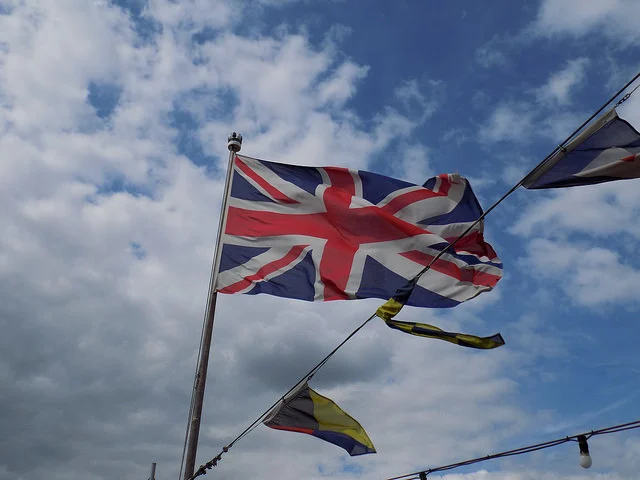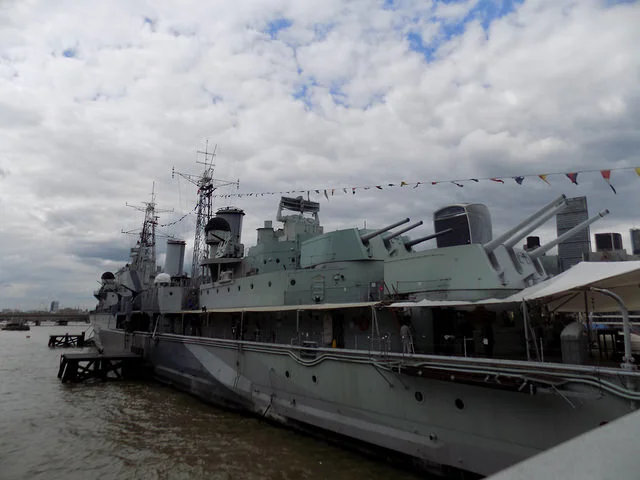
HMS Belfast: The British Ship of World War Two

Across the water from the Tower of London there is a silent memorial, a memorial to all those who for six long years risked their lives to keep Britain going, she would see service from the very first to the very last day of the war. Serving in nearly every theatre; she is a marvellous looking ship, her big guns tower over her decks like fingers reaching out. By now, you may have guessed that I am referring to none other than the magnificent HMS Belfast.
As a child I can remember going to London on trips with my Dad, one of the many places he took me to in London, was this ship. I probably around six years old at the time and it was on this very first visit (of many) that I knew I wanted a career at sea.
Fast forward quite a bit and I found myself once again stepping foot on board this famous ship, I hadn’t been to HMS Belfast in a few years so I felt it was time to re visit. Unlike my other journeys to far flung and sometimes exotic locations, this one was to be a close to home affair. I can easily visit any day of the week being local to London. I would strongly recommend taking the train rather than driving as driving in London comes with many irritating obstacles nowadays.
Getting to HMS Belfast
Between the cycle lanes, congestion charging, busy pace and overpriced parking and a simple train journey, it was a no brainer to take the train!
I am a person who does not like public transport and I must confess I do loathe taking a bus or train to get about, preferring the direct nature of a car as well as the comfort. Sometimes it is the only sensible and practical option, not to mention the cheapest option; with London, this is definitely the case.
On a nice sunny day, myself and Jo decided to go for it; turning up at our local train station (Basildon) I had many memories, a pertinent one from my childhood was you that you had to open the doors yourself to get in and out of the train. I loved the old slam door trains but alas they are all gone now and replaced with automatic sliding doors for safety reasons.
The train arrived, the journey was going to take around 40 minutes before arriving at London Fenchurch Street station, on the trip I discussed with Jo the plan for the day as had planned to visit a few museums which I’ll write up another day. We both agreed HMS Belfast was our first stop.
The train pulled in to Fenchurch street station and a crowd had formed at the door I remember thinking to myself had this been one of the old slam door trains I probably would have jumped off a little while ago and avoided the rush. Nowadays, you have to wait for the train to come to a complete stop.
Leaving the station, it’s a short walk via Tower Hill and just bypassing the Tower of London. London is truly a historic city, the buildings a mash up of old and new. Amongst modern office blocks you have a historic fortress, a Victorian bridge and a World War Two warship.
Located on the opposing bank to the tower of London is HMS Belfast. Before we ventured aboard, we took in the sight of the lifting Tower Bridge to allow a passing ship through. Tower Bridge is open to the public and you can go down and see the foundations as well as the lifting mechanism or walk over the gantry above.
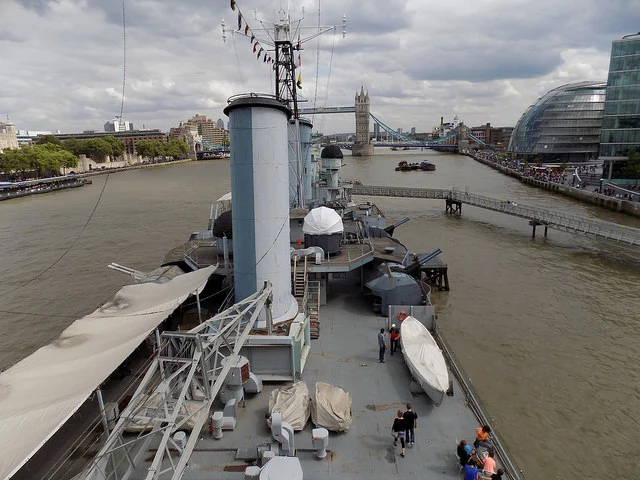
A Bit About HMS Belfast
Walking along the shore line we finally get up close to HMS Belfast. HMS Belfast isn’t a battleship or a battle cruiser, she is instead classified as a light cruiser if you can call her 11,250ton displacement light. The ship was built in Harland and Wolff the famous yard in Belfast Northern Ireland which also built the RMS Titanic. Her keel laid in December 1936 and then launched in March 1938. HMS Belfast would enter service just before the outbreak of world war two.
Stepping on board Belfast is like stepping back in time, this is the Royal Navy my family served, a Royal Navy that laid the foundation of the British Empire with big guns and many ships. The modern Royal Navy has been scaled back significantly from the sheer mass of yesteryear, now restricted by tight budgets and streamlined for practicality (although there is much work to be done).
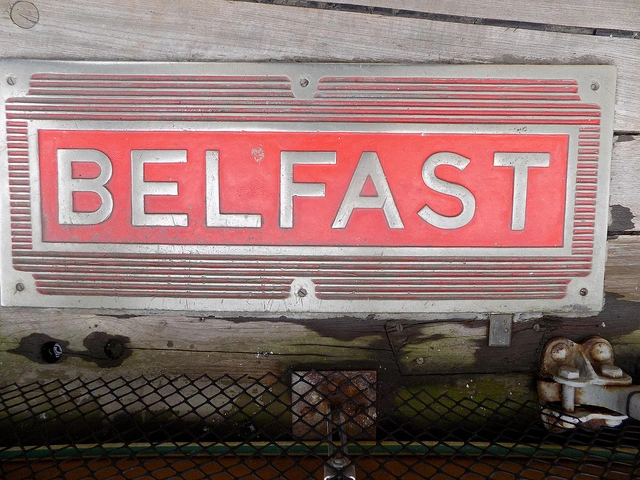
Despite initial success at sea, HMS Belfast struck a mine in November 1939. The blast was severe enough that it had bent the keel and loosened machinery, the damage was so significant it put Belfast out of action until 1942. Today there is no noticeable trace of the damage and the fact that she could be recommissioned is a testament to the build quality of British Ships at that time.
HMS Belfast would serve in World War Two in the Atlantic and Arctic convoys. In 1943 she played a key role in the destruction of the German pocket battleship Scharnhorst which later became known as the battle of the North Cape.
On June 6th 1944, HMS Belfast’s main battery opened up on the beaches of Normandy. During her five-week service at Normandy, her main battery would fire nearly 2,000 shells. The fighting moved inland and out of range of her guns, her service completed, she became the last ship to fire at the landings.
The war wasn’t over for HMS Belfast and she was ordered into the Far East to take part in Operation Downfall, the invasion of Honshu (main island of Japan), however, with two atomic bombs being dropped, she missed the action and arrived just as Japanese surrendered.
HMS Belfast would once more be called to action, this time in 1953 to support United Nations troops in the Korean war. She formed part of an American battlegroup and it was at this point that her guns would fire in action for the final time.
HMS Belfast was present at Tanganyika independence prior to her going into reserve where she was refitted awaiting scrap. She was saved by her former captain then MP Morgan Giles, with her last mission the one that she remains on to the current day – As a public attraction her doors opened on Trafalgar Day 1971 and have been rarely closed since.
Walking on the aft deck you get to see the White Ensign flying in the breeze, the Ensign is one of the most famous naval flags ever to fly, a symbol of a once mighty Empire. Today the Belfast is nothing more than a museum, a symbol of a bygone era. Her guns and engines are silent and she will never put to sea under her own power again.
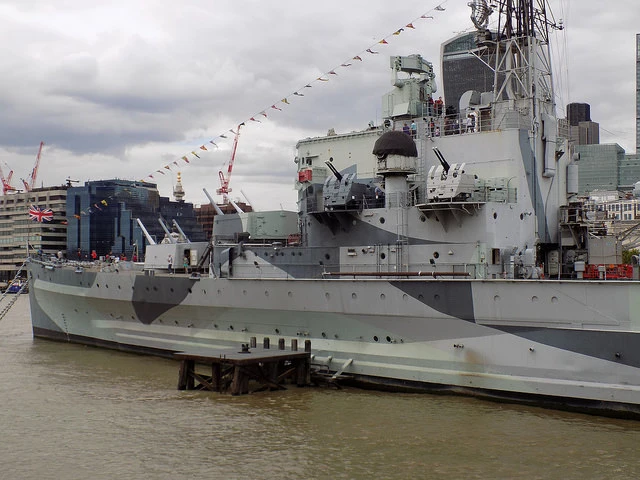
Jo and I decided to work bottom up, that means we start below decks in the heart of the ship and its engine room. Unlike a lot of floating museums, the engine rooms of Belfast are open to the public and you can walk around and see the massive turbines that would propel the ship at 32 knots (60km/h 37mph). The turbines were exposed (their casing opened) showing the intricate blades and fans that each turbine would use to power the ship forward. It took tremendous force to turn just one of the four three bladed propellers.
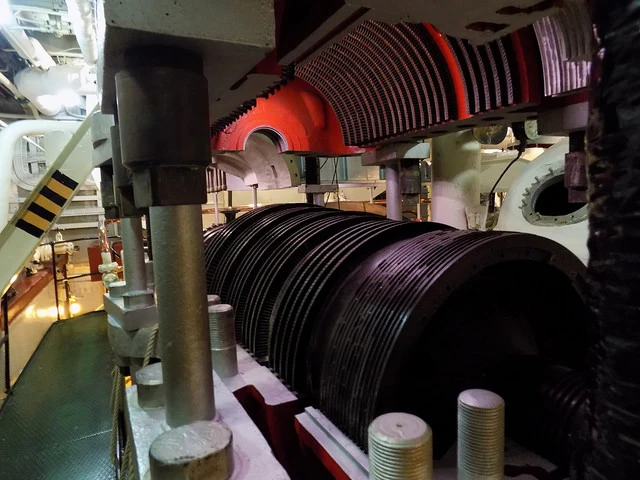
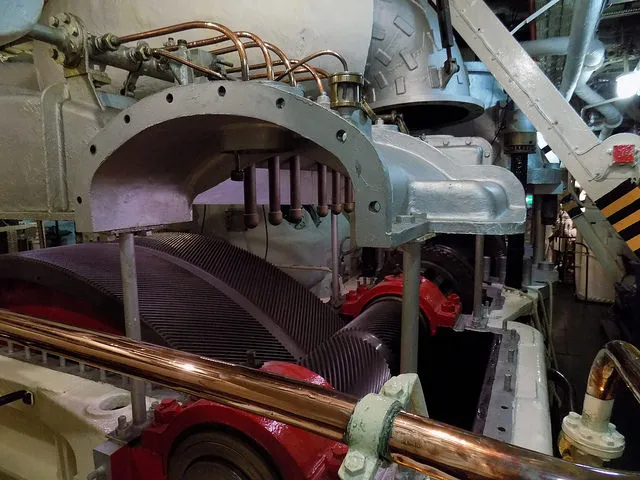
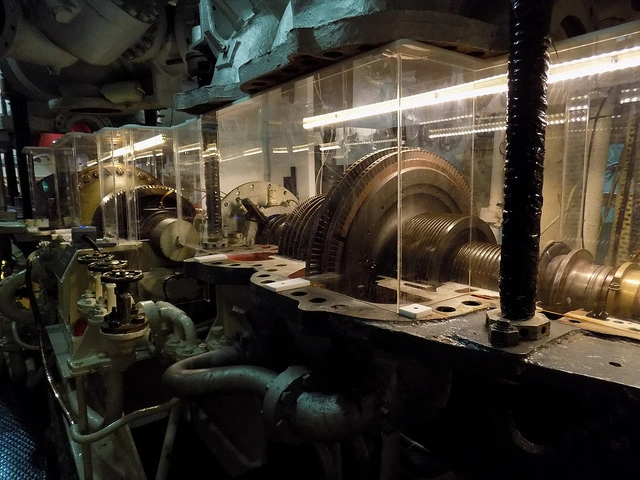
HMS Belfast – The Engine Room
The engine room was hot and you can imagine that in the Tropics, with engines running the discomfort you would feel due to the heat. It is also a dangerous place to be in action because you’re below the water line and what’s more in one of the most dangerous parts of the ship.
Having spent time in a real working engine room personally, I imagined the noise would be deafening as even on modern ships the noise is quite something. Below deck the noise amplifies itself, reverberating off the bulkheads and deck above. It’s also one of the hardest areas to escape from in an emergency and is impossible to escape from if the ship capsizes.
Her massive boilers are like mini buildings, unlike boilers of some of the older ships in the 20th century, the modern ships (of the time) were powered by oil fired boilers not coal. The same setup is used in some of the Russian navy ships we see today specifically the Admiral Kuznetsov heavy aviation cruiser. In the Royal Navy, they have moved to combined diesel and gas with electric motors, preferring the internal combustion engine instead of oil-fired turbines.
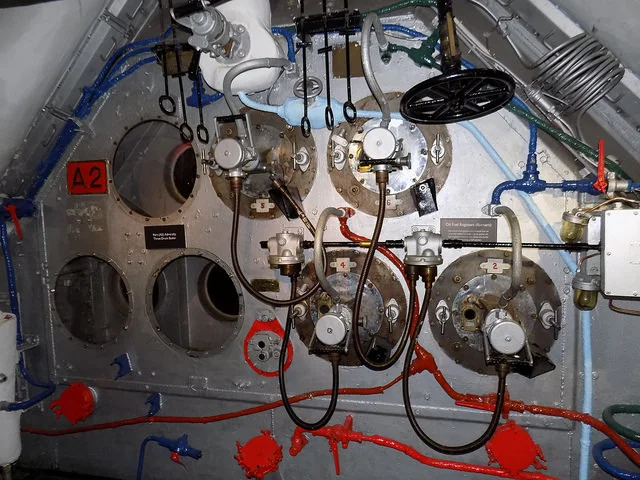
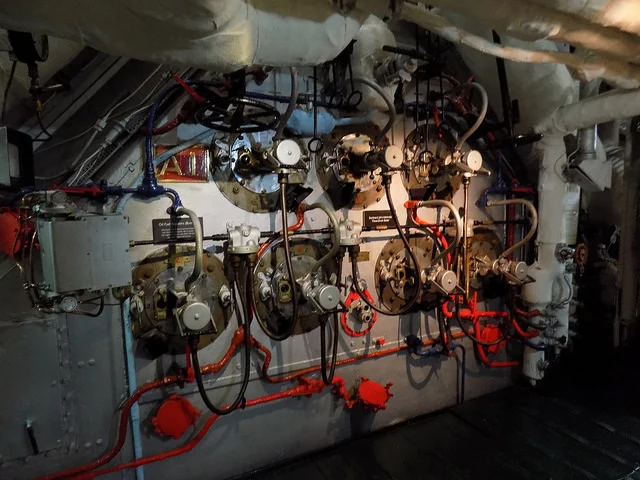
Working our way through the ship we come across the mess decks. This is where the men would eat sleep and socialise when off duty, in keeping with tradition from the “Nelsons days” hammocks were still used. During service this area would have been crowded, noisy and also smelly.
The handful of galley crew had their work cut out on HMS Belfast. With three galleys, one main, one for feeding the crew and an action stations galley up on deck. These were used to sustain the entire crew of up to 880 people. The Royal Navy got the best food during the war effort as rationing wasn’t something that happened in the Navy nor most of the Armed Forces (with the exception of Army rationing in battle).
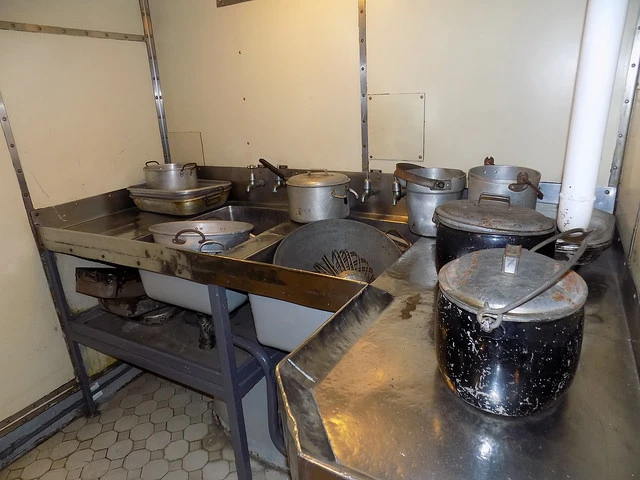
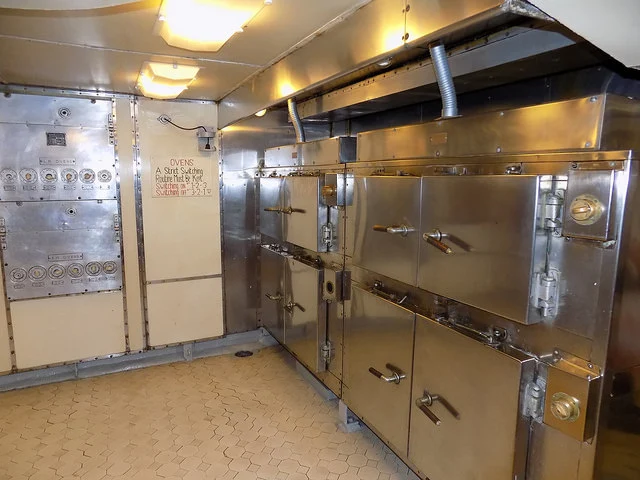
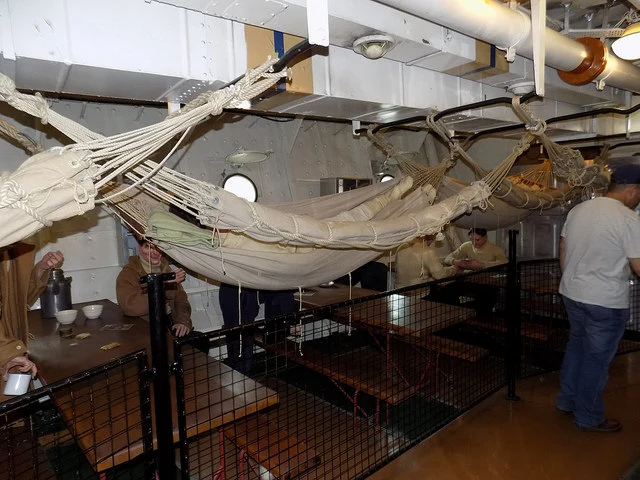
HMS Belfast – Centralised Command Post
This really does take you back in time, the whole ship is an experience and as you wander around you can’t help but imagine what it would have been like to serve on her. Even after eighty years, you can still smell the faint traces of oil fuel.
We make our way away from the heart of the ship and the engine room and come to the brain of the HMS Belfast. The centralised command post. In her later years HMS Belfast was used as a command ship, alongside her radars and communications equipment are a few other goodies.
Probably the most noticeable feature in here is the “plot” (a transparent screen with range rings on it) feeding up to date information to the operations staff. The men working the plot had to be very clever and they had to learn to write everything backwards and from right to left in order for the information to display correctly.
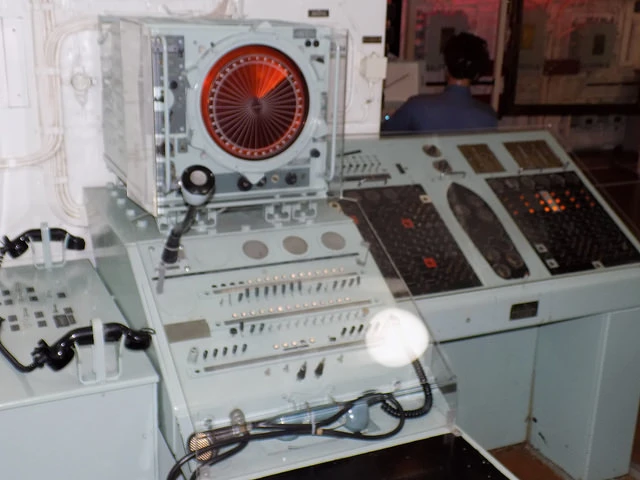

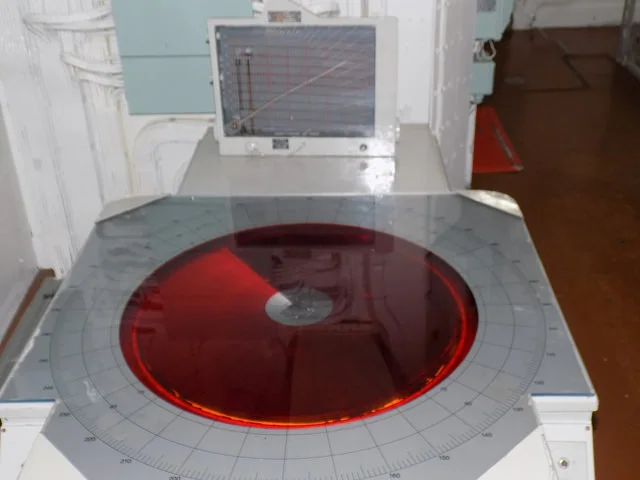
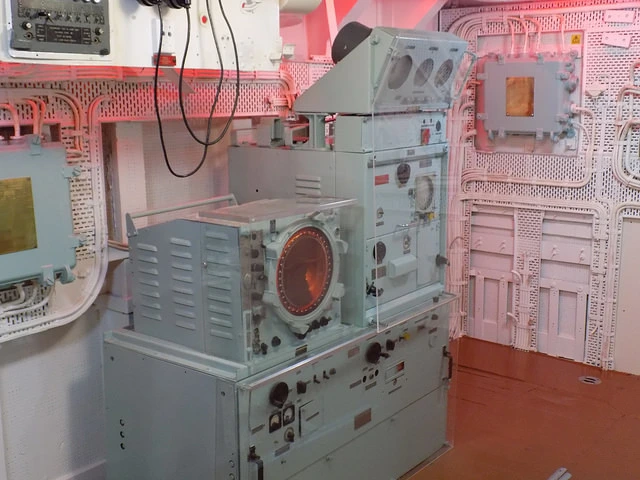
HMS Belfast was a community unto itself with facilities including a church, hospital and a bakery to name a few. It also had a NAFFI (Navy, Army and Airforce Institute) shop. If you wanted your clothes washed you had to go to the Chinese laundry, aptly named as it was run by men from China and Hong Kong. Today in the Royal Navy this tradition still exists in some parts, although laundries tend to be now run by Nepalese servicepeople.
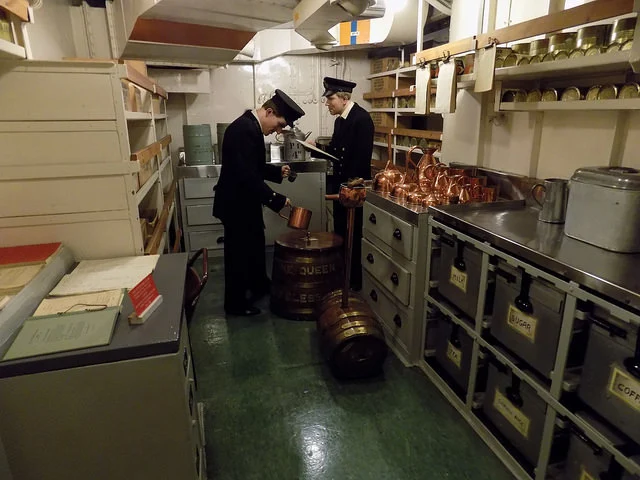

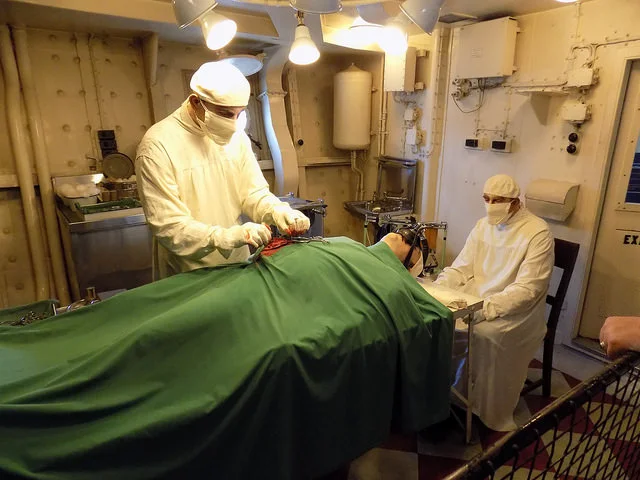
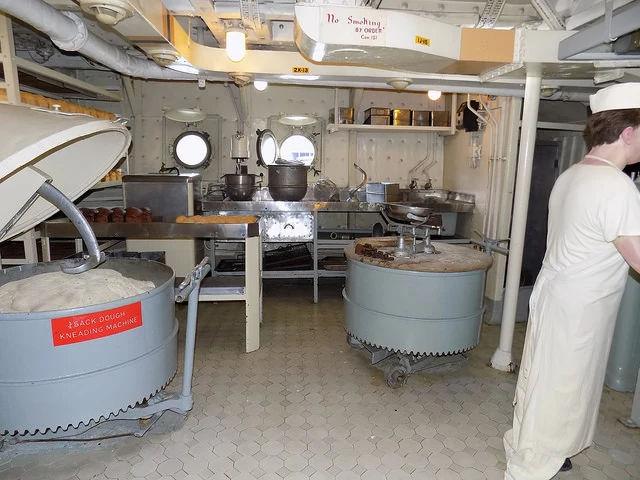
HMS Belfast – The Bridge
I am feeling in my element, I have always loved ships and submarines and I feel at home on HMS Belfast. I love to explore and HMS Belfast is so much more than I remember from my childhood. I was most eager to rediscover the bridge, so onwards and upwards we travelled. It wasn’t long before looming into sight was the bridge, unfortunately I missed my opportunity and Jo made a dive for the captain’s chair. Being honest it looks like it belongs in a pub bearing the resemblance of a bar stool, I finally take my seat and am reminded that although uncomfortable, it is practical.
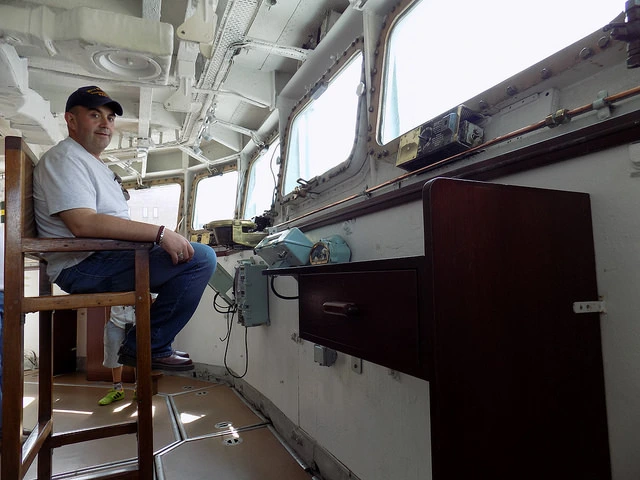
Looking out from the bridge window you really do get a feel for the power this ship has, the bridge overlooks HMS Belfast’s forward main armaments turrets A and B. Each turret has three six-inch guns and at present angle and elevation, they are interestingly trained on the London Gateway motorway service station!
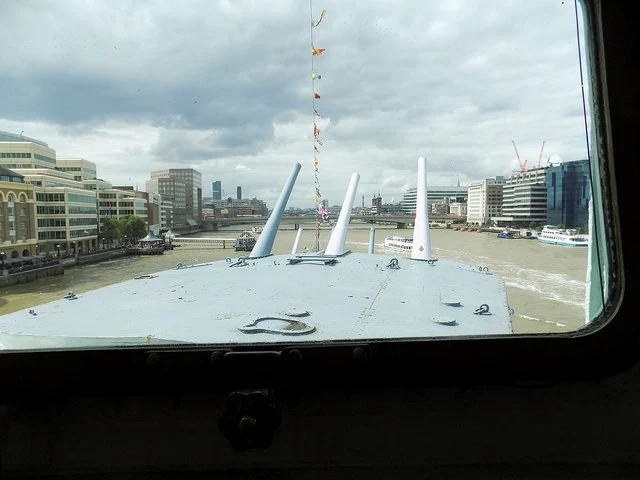
HMS Belfast and London Gateway Service Station
You might be wondering if the admiral got a bad cup of coffee at the Gateway services? Sadly; that is not the case (although many drivers would happily stand by and watch HMS Belfast’s guns obliterate the place). The reason for the target was a matter of practicality, they had to point somewhere and the site was selected well in advance of HMS Belfast’s arrival for permanent mooring.
At present the forward turrets point at a 45-degree elevation and are some 45 degrees off centre. This is a comfortable position for the guns and means that Belfast main battery would be easily in range of London Gateway services with a distance of 18.5km as the crow flies (23km being HMS Belfast’s maximum range). The six-inch 112lb shell has the capability of firing at a rate of eight shells per minute. If the guns were to be fired it would reduce the service area into rubble in a matter of a few minutes using two or three salvos.
Next time you visit London Gateway services, remember you are standing in a target zone.
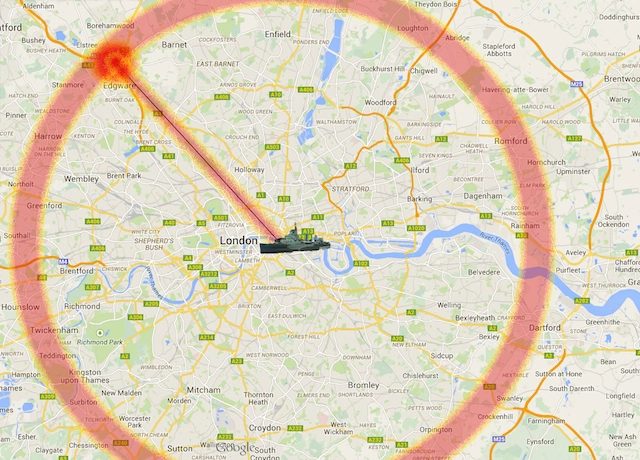
For me HMS Belfast is a splendid looking cruiser, though outdated, in a one on one duel it is likely she would win against a modern destroyer of similar size. Many people don’t realise that even though Belfast does not have modern missiles her guns are a grave threat to any ship at sea, in fact during the 1982 Falklands war this was pressed home with another ship similar in size and armament the General Belgrano. With nothing in the Royal Navy arsenal that could take this ship on using guns and missiles, she was ultimately sunk by a nuclear submarine (the aptly named HMS Conqueror). The Belgrano’s six-inch guns much like Belfast’s, provided a credible threat to the task force that sailed south. In layman’s terms, a modern warship could never out gun a warship like Belfast because the armour is too thick and the guns are too formidable.
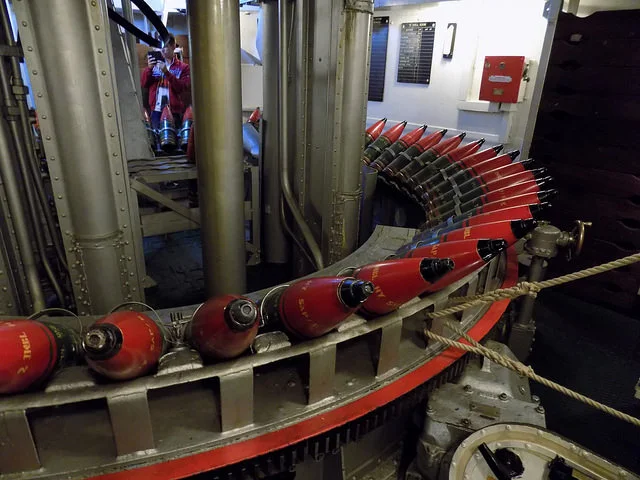
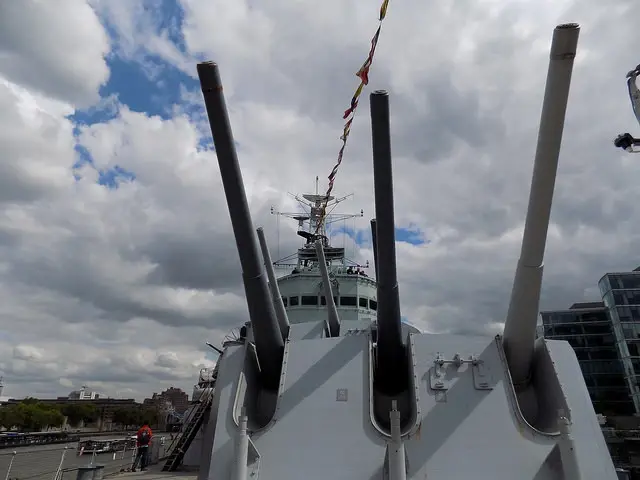
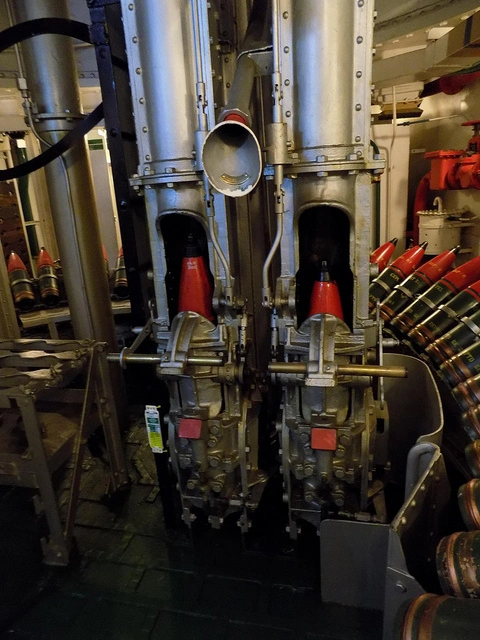
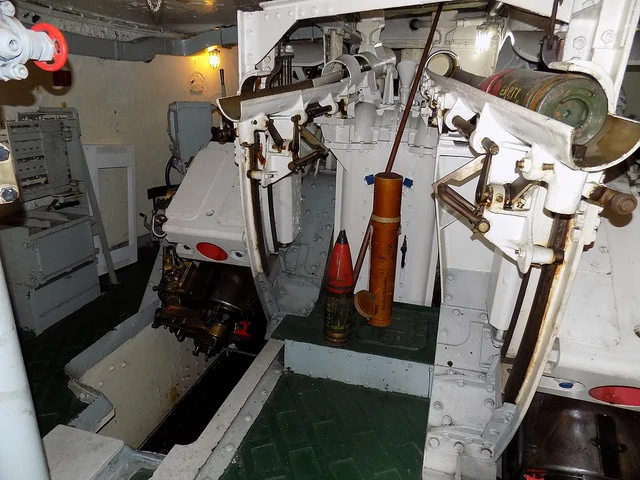
HMS Belfast – The Deck
My exploration aboard HMS Belfast was coming to an end, I snapped a few more pictures of the ship as well as the open bridge which sits above the normal bridge. I also ventured inside the gun turret, with her masts behind me I noticed the range finding radar that would track the guns onto target and grabbed a picture of that too. Looking down from the open-air bridge you see that she is actually a tall vessel; the main twin masts which were built in Russia for her overhaul stand tall but she is still able to pass beneath the Tower Bridge unhindered.
Standing on the bow of the ship I can only but dream of what it must have been like taking this ship to sea, I often feel like I was born into the wrong era, HMS Belfast is a monument of my Grandmother’s era, the era of the British Empire and when Britannia really did rule the waves. The dark clouds (typical London weather) begin to gather over HMS Belfast, it strikes me as a poignant metaphor, the sun has set on the British Empire, and today we glimpse back at it with relics like HMS Belfast.
Hungry for more? Try:
My Top 5 Pre-World War One Battleships
The Greatest Military Commander That Ever Lived
My Top 5 Corvettes (Not The Car!)
